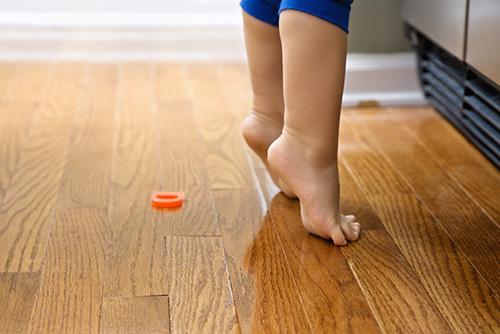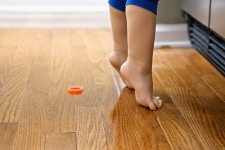Let’s start with toe walking. Toe walking (which is when children walk on their tip-toes) is incredibly common in children who are learning to walk – particularly in the 2nd year of life. By the time kids turn three the tendency to toe walk fades; however, it does persist in some children. Now, it should be noted that the occasional toe-walking isn’t cause for concern. But, for kids who do it all the time – and especially for those who continue to toe-walk after turning 3 – a visit to the doctor is in order.

With persistent toe-walking, the doctor visit is twofold. First, continued toe-walking (with both feet or just on one foot) in older children is often linked with other conditions like cerebral palsy or other nervous system or muscle weakness disorders. If all of those conditions are ruled out, your physician may recommend a course of physical therapy so that stretching exercises can be learned; otherwise – if the toe-walking continues to age 4 or 5, casting of the foot and ankle (to help stretch the calf muscles) for an extended period of time may be the only way to stretch the calf muscles and regain normal walking function.
So, what about kids who are pigeon-toed (also called in-toeing)? Well, just like with flat feet, kiddos who are pigeon-toed rarely have to be treated for the condition. In past decades, children would be fitted with special shoes and braces to “cure” this condition, but that’s not the case anymore. When babies begin to stand – typically between the ages of 8 months and 15 months – a natural turning in of their legs may occur. This isn’t often noticed until the child gets a bit older and starts to walk – at which point their parents (or overly helpful onlookers) may notice that the child is walking with their feet turned inward at the toes (which is why it’s called “in-toeing”).
There are several very normal variations in the way that the feet and legs align that can cause in-toeing. For instance, there’s tibial torsion, which causes the lower part of the leg to rotate inward (and, when combined with in-toeing, can cause tripping). There’s also a condition known as femoral anteversion, which is where the femur (the long bone in the upper part of the leg) possesses a greater-than-normal bend and can cause the upper leg to rotate inward and, as a result, in-toeing as well.
In-toeing tends to not interfere with walking, running, or sports and is something that kids will grow out of as they progress into their teen years and develop better muscle strength, control, and coordination. If it appears that in-toeing is causing issues such as pain, physical therapy may be prescribed to help aide strengthening and flexibility.

